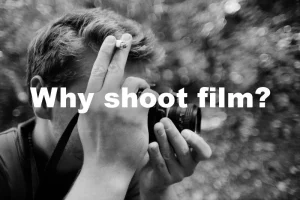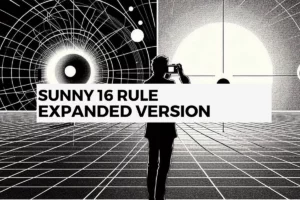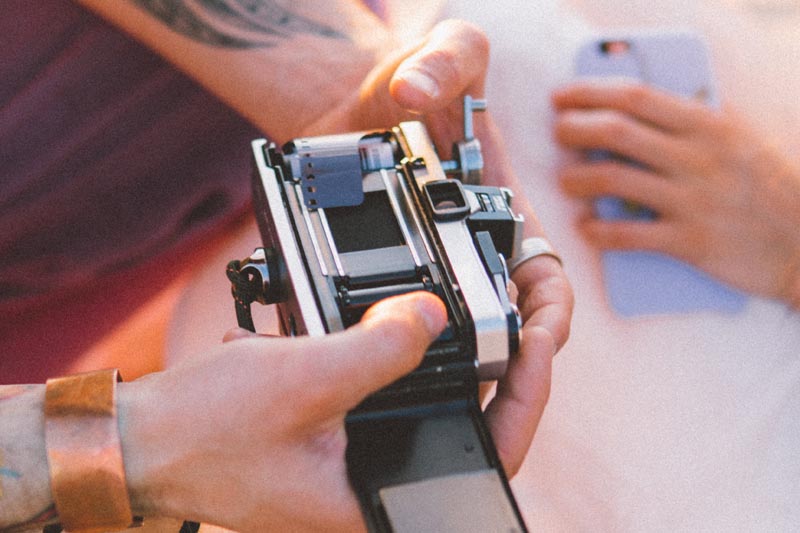How Does A Film Camera Work?
Last Updated on February 18, 2023
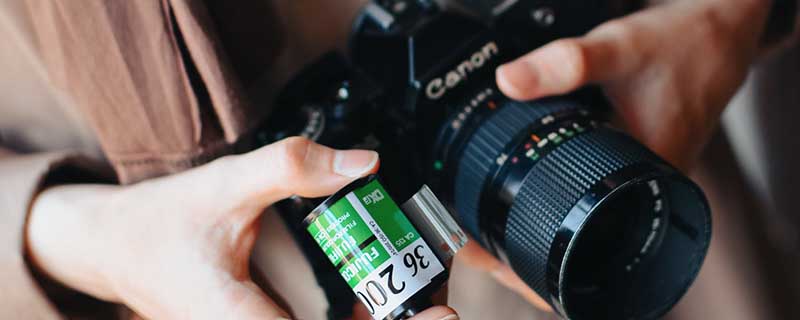
A camera is simply a dark box inside which a lens is placed whose function is to project the rays of the object or objects that we want to capture onto a film or a photosensitive sensor. Another way to define it is that it is a synchronized system used to capture photographs.
It is mainly composed of a body and a lens. Through the lens is where the light passes and is directed towards the interior of the body, acting as a receiver and image capturer.
But to understand this process, which may seem simple at first glance, it is necessary to know the different parts of a camera and the different functions that each part performs.
With this guide we will try to answer the question about how a film camera works.
Table of Contents
Basic operation of a camera
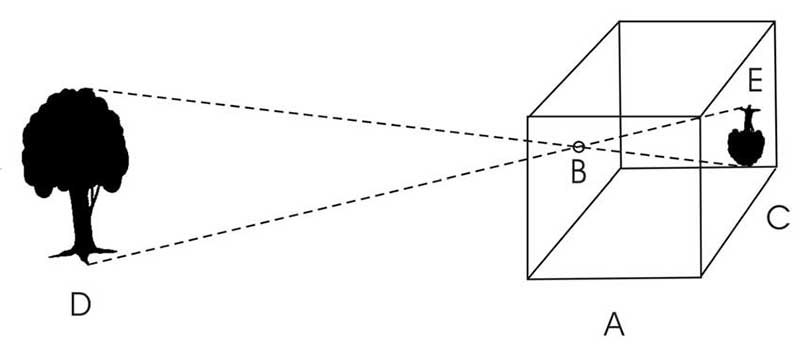
As we said at the beginning, a camera is basically a dark box through a hole (lens) we let the light pass through and then print it on the surface of the film. A camera does the same thing that our eyes do, it is in charge of receiving light rays from the outside and transforms them into an image.
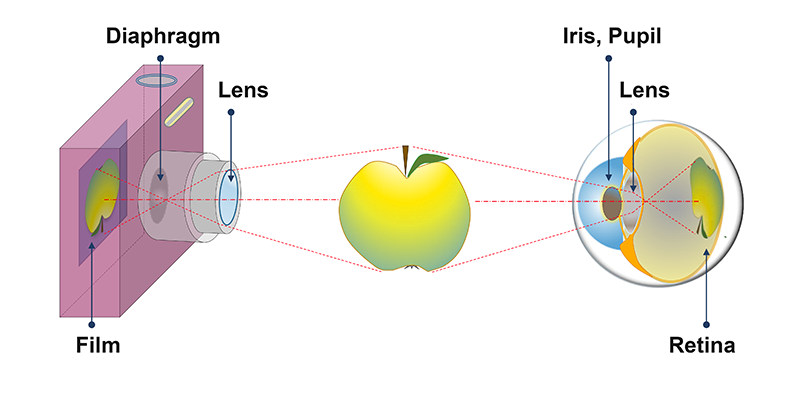
The light rays enter the camera through the lens that is responsible for grouping them into a single point and depending on the distance at which the object is located, the resulting image will have a different size: it will be smaller or larger.
What parts does a camera have?
The three main variables that make a photograph possible by means of a camera are; the focus and projection of the image through the lens, the reception and printing of the image on the photosensitive film that is located inside the body and the speed at which the image is taken by adjusting the shutter speed .
Next we will see the parts of every camera that give rise to these three variables taking place.
The body
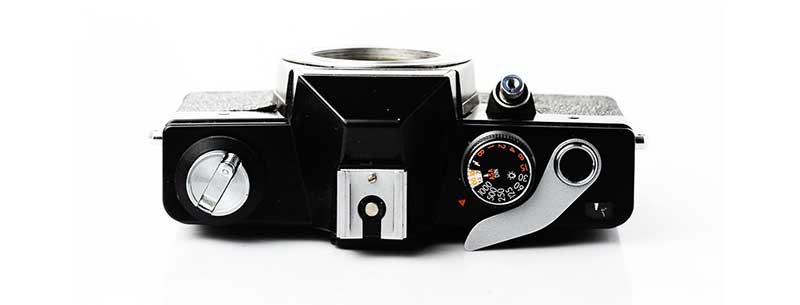
The body is the part with the most functions of a camera and it is where the film is housed to capture the images. On the other hand, it is also where the presets are made to take the pictures.
Its interior is composed mostly of complex gears that act in synchrony for the actions of capturing an image through the lens, printing them on the film, and advancing the required frames for each photo on the film.
The functions of the body are mainly composed by the viewfinder, the film advance lever, the shutter speed ring and the shutter release.
- The viewfinder: Is the part where we observe the framing of the photo to be composed and it is where we make the focus adjustment (depending on the system that the camera has to focus, it will be one way or another).
- Film advance lever: It can take many forms depending on the type of camera, but its basic function is to advance the film one frame at a time in accordance with the camera’s shutter release.
- The Shutter speed ring: In most cases the shutter speed ring will be located on the top of the camera, but there will be some exceptions where the ring will be located on the bottom of the lens, such as the OM-(1-4) from Olympus.
- The shutter release: It is a button on the camera body that is used to take the picture.
- The film rewinder: It is mainly found in mechanical cameras that don’t have electronic rewinding, and consists of a crank that turns until the film is put back on the reel.
The lens

The lens is the part of the camera that directs light rays onto the film. It consists of one or several convex lenses that project the light rays that pass through it at a point called the focus.
When we focus with the camera, what we actually do is match the focus with the camera film to obtain a sharp image.
The shutter

The shutter is the camera device that allows us to control the time that the film will be exposed to the action of light.
Its function is similar to that of the diaphragm: to regulate the light that will reach the film. But while the diaphragm controls the intensity of the light, the shutter controls the exposure time.
Shutter types
Most film cameras use one of six shutter types:
- Focal-plane shutter
- Simple leaf shutter
- Rotating shutter
- Diaphragm shutter
- Central shutter
- Electronic shutter
What is the aperture of the diaphragm?
Aperture in photography refers to the ability of the lens to open up to determine the amount of light that passes from the lens to the camera’s film. This affects the exposure of your photography, the more open this lens opening is, the more light your images will have and, the more closed the film is, it will capture less light.
Fixed and variable aperture
Depending on the types of camera lenses, these may have a fixed or variable aperture. The size of the aperture is described in values known as “f-stops”. These values can be found engraved around your lens. It may confuse you at first, but the larger the number that accompanies the F indicates that the opening is smaller. So an f/16 lets in less light than an f/4 aperture.
Depth of Field

As well as having an effect on exposure, they also have a direct relationship to depth of field. The depth of field is the distance between the closest and furthest elements of the image, that is, the part of the image that has the greatest sharpness.
The smaller the aperture of the lens, like f/8 for example, you will have more depth of field (photos without blur), on the other hand, if you want a blur effect in your image, you should use a larger aperture, like f/2, for example.
What is shutter speed?

The shutter speed is that element which, together with the diaphragm, defines how much light the film/sensor should reach. The faster the shutter speed, the shorter the time the sensor is exposed to light.
The shutter speed is measured in fractions of a second according to a standardization that imposes that a time following or preceding the reference time is double or half: 1/1000 s, 1/500 s, 1/250 s, 1/125 s, 1/60 s, 1/30 s, 1/15 s, 1/8 s, 1/4 s , 1/2 s, 1 s.

When shooting handheld, you have to choose a shutter speed that is fast enough so as not to get a blurred photo. The speed should also be chosen according to the length of the lens we are using: with a 28mm lens I will have to use a reciprocal time of the focal length equal to 1/30 of a second; while with a focal length of 100mm the speed should not be less than 1/100.
What is ISO sensitivity?
ISO stands for International Standards Organization. The ISO sensitivity it’s one of the three elements that determine the final exposure of the photographic image, along with the aperture and shutter speed.
The ISO value in film cartridges (formerly called ASA), which generally varies between 25-3200, indicates the specific sensitivity to light: the lower the number, the less sensitive the negative is to light. Conversely, a higher number indicates greater sensitivity to the light, thus allowing the film negative to work better in low light conditions.
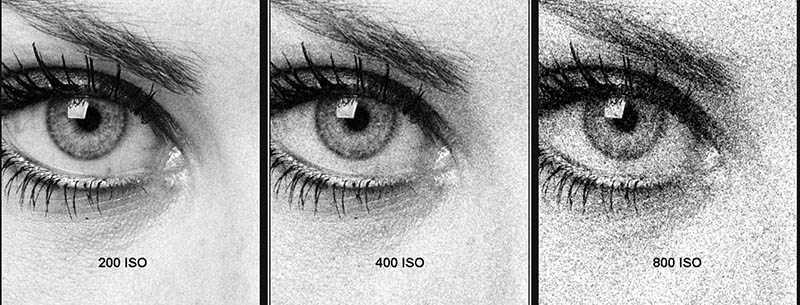
In addition to being a factor that can affect motion, a higher ISO generally results in a noisy or grainy image.
Types of analog cameras
The types of analog photo cameras change depending on the characteristics they have. This is why we can talk about a variety of cameras according to their viewfinder system, according to the film format they support, according to their size, according to their function, etc.
The Reflex Camera

The name reflex camera comes from the fact that these types of cameras use a mirror that reflects (reflex) the light coming from the scene and directs it towards the viewfinder (towards the photographer’s eye).
When the shot is made, the mirror rises , that is, it rotates upwards in such a way that the light can reach the film.
The Rangefinder Camera

The basic concept behind all these cameras is the rangefinder , an optical instrument for measuring distances based on triangulation, with many uses beyond photography.
When we look through the viewfinder of these cameras, on one side we see a window to the world , through which we see the scene in full focus , just as our eyes see it. As this visualization does not depend on the objective that we have mounted, some framing lines are in charge of reminding us which part will be the one that will be registered in the photo depending on the chosen lens.
The Viewfinder Camera
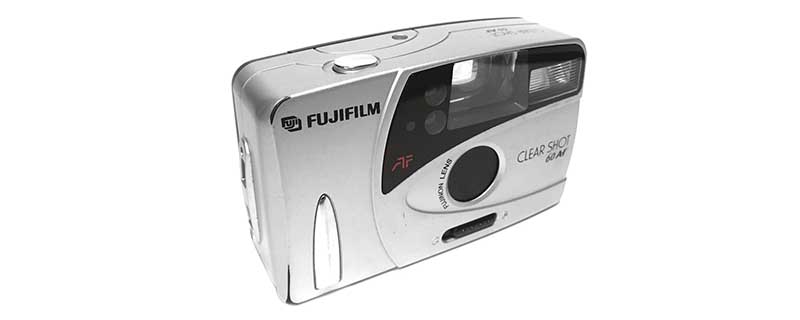
Direct view cameras, or also called simple viewfinder cameras, are those that do not use a mirror to send us the image of the scene through the viewfinder.
A characteristic of this type of viewfinder is that it always shows the same image regardless of the optical angle of the objective or lens. It does not matter if it is a zoom or interchangeable lens type camera, the coverage of this type of viewfinder is usually less than 100% of the image.
Cameras that carry this viewfinder are usually fully automated cameras like point and shoot, or simpler cameras like disposable cameras.
What are the existing film formats?
One of the most common classifications is their grouping by size. The choice of the size of the negative will be made depending on the camera that we have since these only accept one type of format unless we have a separate device called Backup that allows us to use a different negative size in a camera with a certain format.
110mm format
An almost unknown and practically forgotten format, if it weren’t for the fact that several years ago Lomography rescued it from oblivion, manufacturing its famous fisheye and target cameras in this format. It is used in very, very small cameras and gives very small size photos (13X17mm).
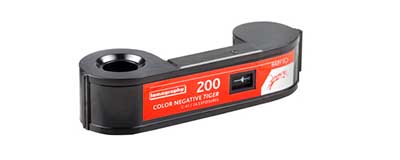
35mm format
It is the format used by most common analog cameras and is so called because of the size of its frame, which is 36 x 24 mm. The biggest advantage of this format lies in the size of the cameras that support it.

120 and 220 film format
The medium format negative is, as the name suggests, larger than the 35mm negative. It gives a much higher image quality than its “little brother” and we usually find it in two lengths, 120 and 220.

Large Format
The large format does not use reel film like the rest of the formats. Large format images are taken on plates ranging in size from 9 x 12 cm to 25.4 x 20.3 cm. As is logical, the quality of its images is superior to all other formats, although the biggest drawbacks are the weight, mobility and price of its cameras since, in addition to their quality, they have special characteristics. Its use is common in scientific and museological photography.

Check out our article on all existing film formats.
How to load a 35mm SLR film camera?
Follow the steps in the video to load a 35mm cartridge into a mechanical SRL camera.
How to load a medium format camera?
The process is very different from the 35mm method, follow the steps in the video to be able to properly load a 120 format film into a camera.
How to load a point and shoot film camera?
Loading a compact camera is much easier than loading a manual camera, follow the steps to learn how to do it.
With this lesson we hope you have understood how analog cameras work, knowing what each part does to achieve the final result, which is photography.
